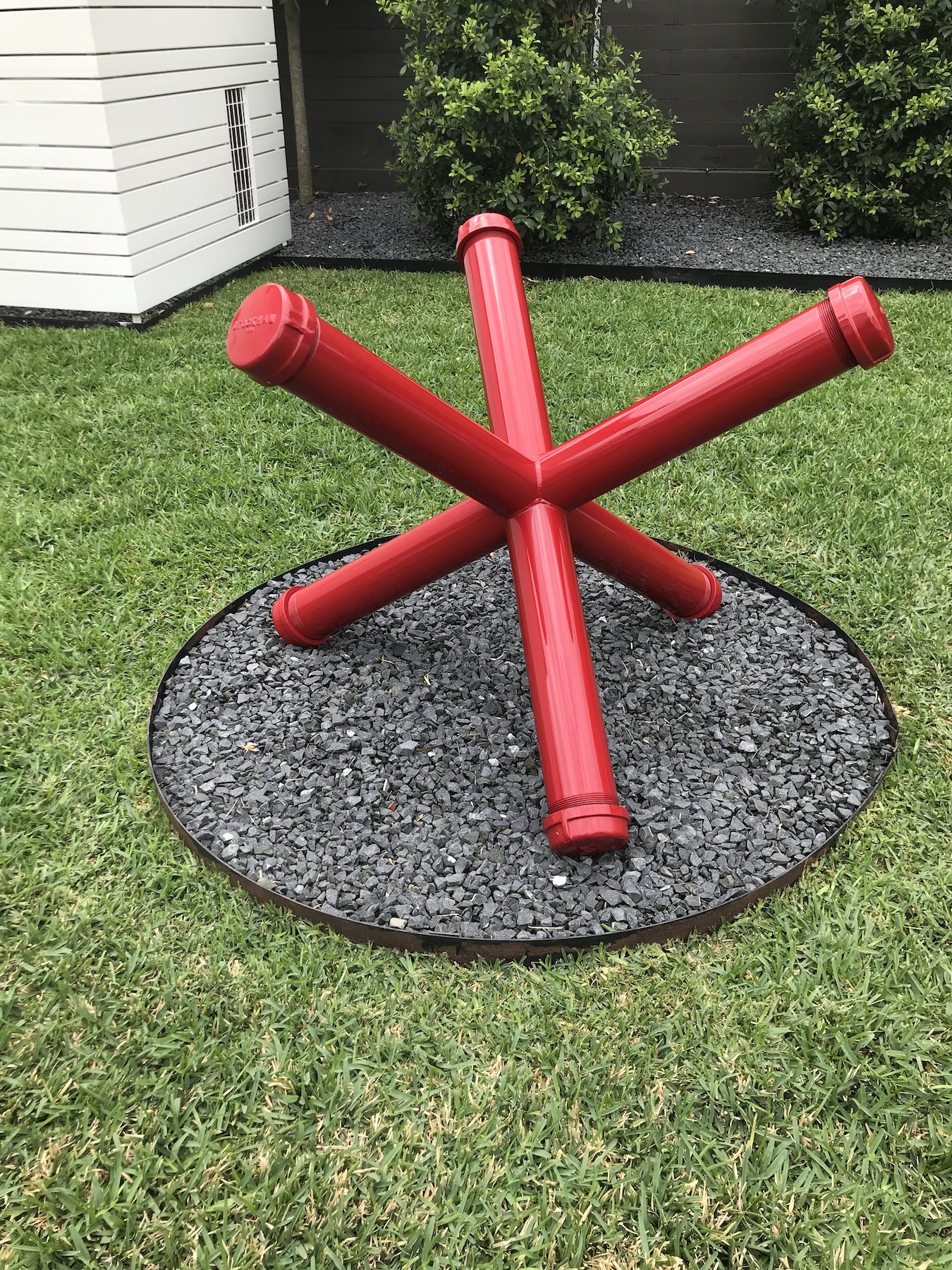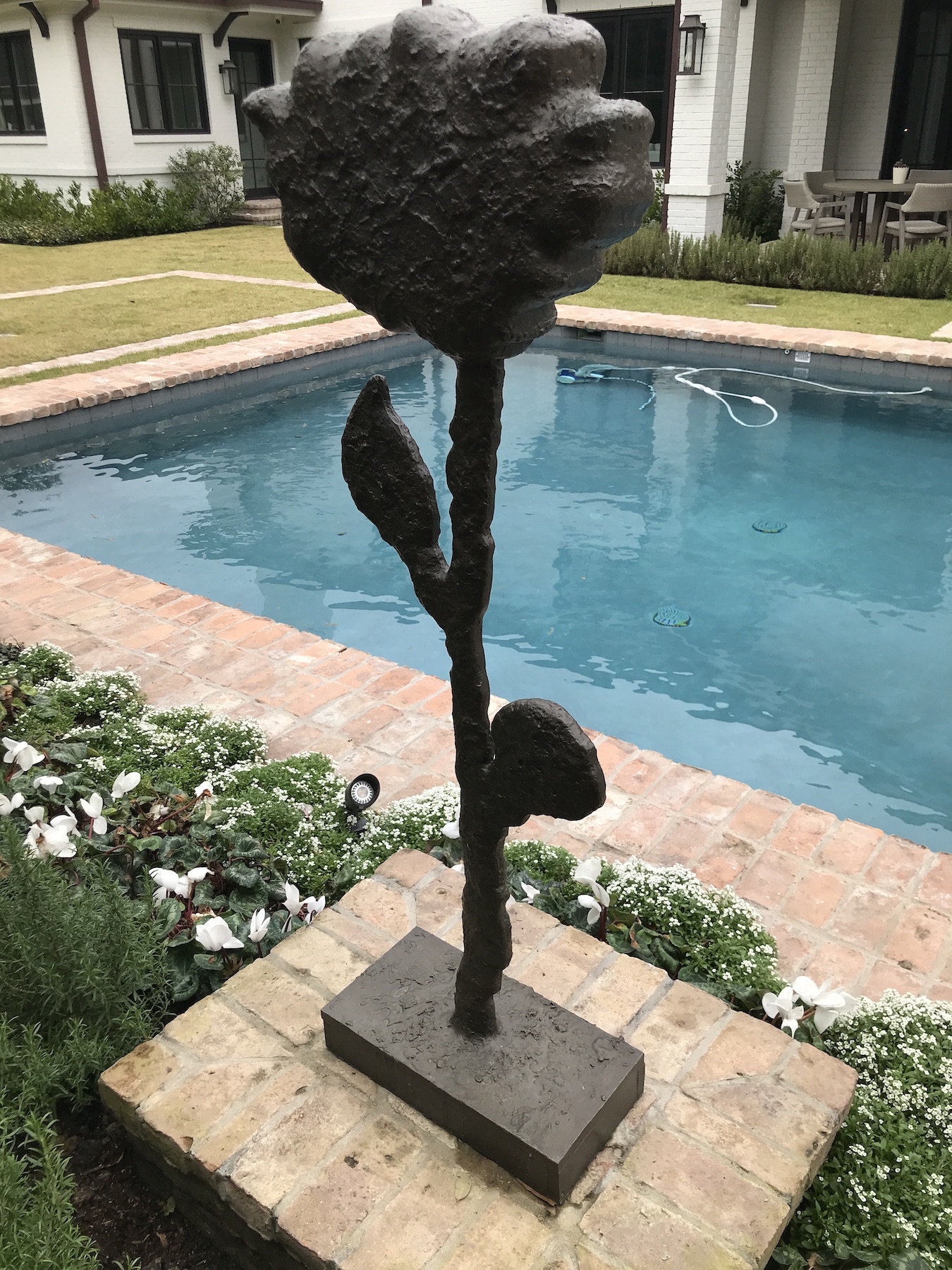PREVENTIVE MEASURES YOU CAN TAKE
Clean It!
- Rinse your sculptures with clean water
- If the sculpture accumulates a lot of dirt or dust, make a mild detergent solution using something like Dawn dish soap and water for a deep clean.
- Using a soft rag or sponge as well as a plastic bristle brush (such as toothbrush) can help in removing lodged dirt and dust in hard-to-reach areas

Drainage
- Raise your sculpture at least 4-6 inches off the ground.
- Water retention is bad for steel sculptures, causing rust to form and could compromise structural support for the piece.
- Be mindful of nearby sprinklers
- If the sculpture should sit in water, be sure the materials can withstand the prolonged exposure.

Create Borders
- Create a barrier to protect your sculpture from damage due to landscape maintenance
- Have your sculpture rest on a concrete or stone base to prevent any invasive plant growth or water retention.

Plant with Care
- Keep foliage and garden plants away from the sculpture and the base it rests on.
- Vines and other plants can attach themselves to your sculpture, which can leave biological growths and cause paint damage or rusting.

Construction & Maintenance
- When undergoing any building maintenance, any paint overspray, drywall dust, etc. can travel and settle on nearby sculpture.
- Protect your sculpture by covering them with a sheet or tarp.

Thoughts about Pools
- If your sculpture is near a pool, pond, or any water feature, make sure it's well grounded and secure.
- Place sculptures outside of the general "play area" to avoid splashing water onto the piece, especially from chlorinated pools.

